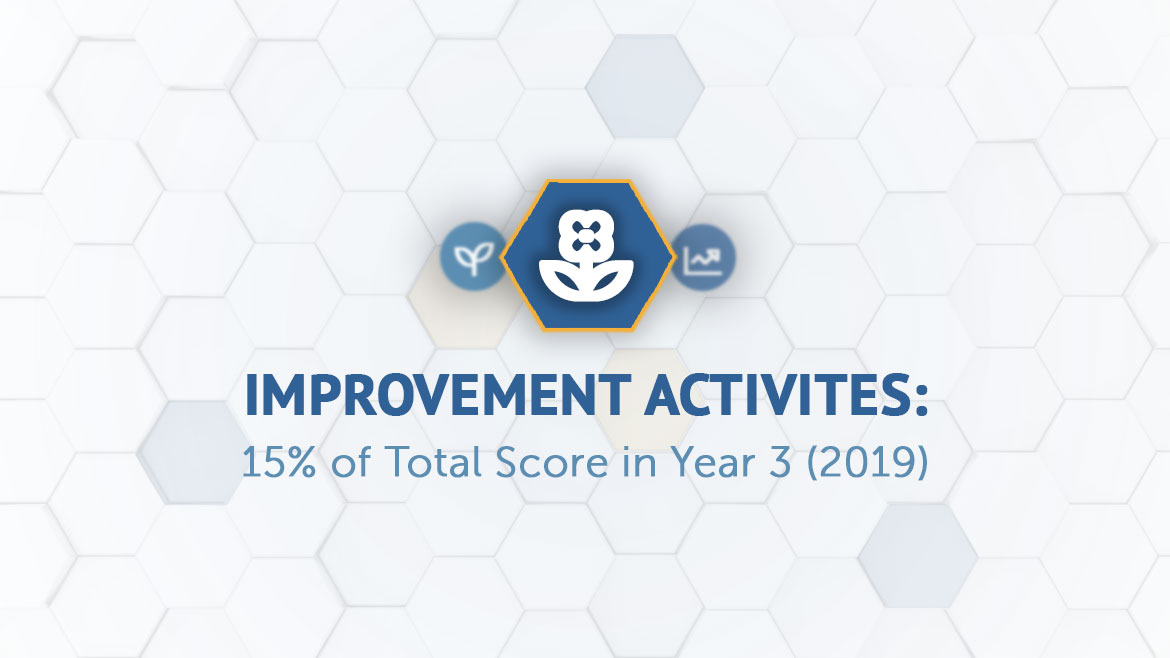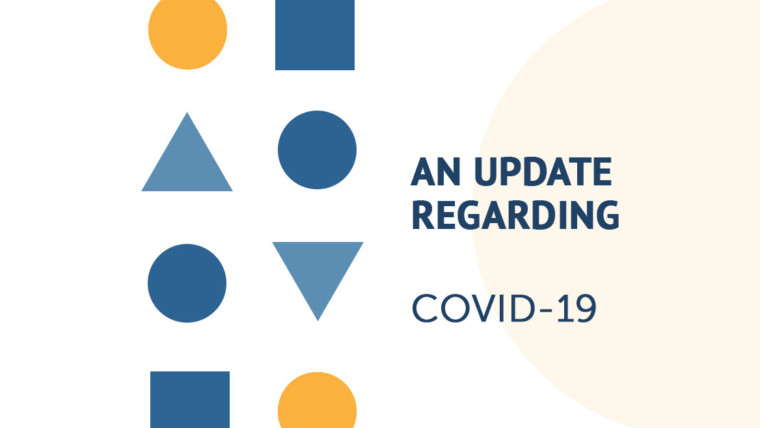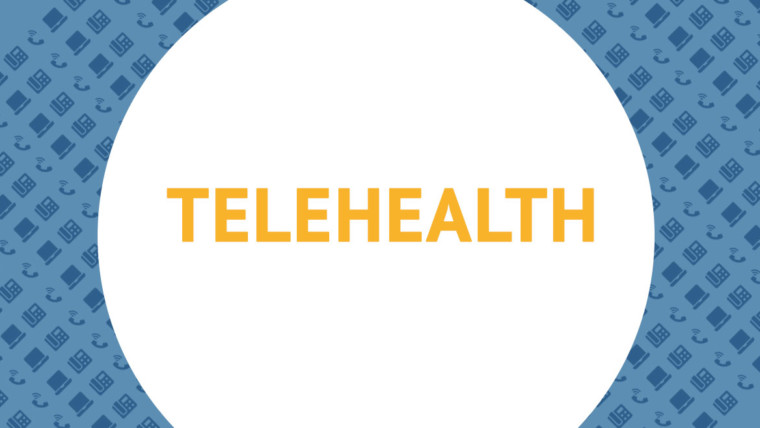Improvement Activities is one of the 4 MIPS categories for 2019 and is the only category that does not have a legacy program making it perhaps the most difficult to understand. Many practices are not aware that the Improvement Activates require active participation. The activities you choose should be part of a quality improvement program for your practice. You should be able to show that you have improved your quality of care and if you are not making a difference note that and choose other activities in the future.
Need personal assistance? Contact your customer advocate or support@mednetworx.com.
There are nine subcategories of improvement activities: Year 3 (2019)
- Expanded Practice Access (EPA)
- Population Management (PM)
- Care Coordination (CC)
- Beneficiary Engagement (BE)
- Patient Safety and Practice Assessment (PSPA)
- Participation in an APM
- Achieving Health Equity (AHE)
- Emergency Preparedness and Response (EPR)
- Integrating Behavioral and Mental Health (BMH)
Cost: 15% of Total Score in Year 3 (2019)
CMS will use its authority to continue to weigh the Cost category at below 30% by increasing the 2019 weight slightly to 15%, up from 10% of the MIPS final score in 2018. In addition, the category will include six episode- based cost measures. CMS will maintain the use of the two existing cost measures Total Per Capita Costs for all attributed beneficiaries and Medicare Spending Per Beneficiary. CMS has delayed implementing improvement scoring in the Cost category for three additional years, as required by the MACRA technical corrections.
MIPS REPORTING REQUIREMENTS
If you are reporting MIPS as a Group, at least one provider must actively participate in Improvement Activities. For Individual Reporting, each provider must actively participate in Improvement Activities. The required performance period is at least a continuous 90 -day period during the MIPS performance period, which follows the calendar year.
IMPROVEMENT ACTIVITY (IA) PROGRAM CHECKLIST
![]() Have an Improvement Activity team to review and choose the Improvement Activities that work best for your practice.
Have an Improvement Activity team to review and choose the Improvement Activities that work best for your practice.
![]() Have an Improvement Activity Policy that documents what your Improvement Activity is and how you will implement and measure it. Keep your policies up to date and in your Audit file.
Have an Improvement Activity Policy that documents what your Improvement Activity is and how you will implement and measure it. Keep your policies up to date and in your Audit file.
![]() Measure what you want to improve before you try any changes and measure again after you implement changes. Include all these measurements and analysis in your Audit File.
Measure what you want to improve before you try any changes and measure again after you implement changes. Include all these measurements and analysis in your Audit File.
![]() Meet on a regular basis, document your meetings, and save your meeting minutes in case of an audit.
Meet on a regular basis, document your meetings, and save your meeting minutes in case of an audit.
You may select the same IA from year to year as long as they are still on the CMS list.
Note: The CMS list has over 100 Improvement Activities and they do add, modify and retire activities. This will provide continuous quality improvement and you can show improvement from year to year. You may want to choose additional or different improvement activities if the activity is not returning any value to your practice.
Scoring
Each activity is assigned a weight, either high or medium, and the weight is defined on the activity. To receive full credit a total of 40 points must be reported.

Large Group (Practices with greater than 15 providers)
Requirements: 40 points to maximize the 15% of MIPS final score designated to Improvement Activities.
Options:
![]() 2 High-Weighted
2 High-Weighted
![]() 4 Medium-Weighted
4 Medium-Weighted
![]() 1 High- and 2 Medium-Weighted Activities
1 High- and 2 Medium-Weighted Activities
Small Group (Practices with less than or equal to 15 providers)
Requirements: 40 points to maximize the 15% of MIPS final score designated to Improvement Activities. Each activity score is doubled
Options:
![]() 1 High-Weighted
1 High-Weighted
![]() 2 Medium-Weighted
2 Medium-Weighted

You can access a full list of Improvement Activities on the QPP website.
Make sure you understand what is required with the Activities you choose.
Example: IA_EPA-A Provide 24/7 Access to MIPS Eligible Clinicians or Groups Who Have Real -Time Access to Patient’s Medical Record. (Activity Weight: High)
Many may see the name of the rule and think our physicians all have access to their patient’s medical record at any time. However, it is not enough to say everyone can access your EHR at any time. If you read the Activity Description, you will see that this activity requires expanded patient access to care, not just provider access to EHR
![]()
- Expanded hours in evenings and weekends
- Phone visits, group visits, or alternate locations (i.e. assisted living centers) or
- Same day or next day patient access to clinician, group, or care team when needed for urgent care or transition management.
![]() If you choose this measure you should document how you expanded patient care, provide numbers and/or examples of how this has improved the care for your patients.
If you choose this measure you should document how you expanded patient care, provide numbers and/or examples of how this has improved the care for your patients.
Real-life scenario:
Dr. Smith has an EHR that he has access to remotely via his vendor or application. Dr. Anderson joins his practice and now she has 24/7 access to patient records as well. Dr. Anderson also offers same-day and next-day appointments that she carves out on her calendar daily for patients that need immediate care. She also has office hours beyond normal business hours once a week. Dr. Smith conducts after-hours on-call and urgent care using phone visits for the practice and often calls patients and refills medications. Both doctors access their patient’s medical record on their phones using their vendor’s provider app. Dr. Smith has access to the full database using Citrix where he documents phone visits and orders tests.
Breakdowns:
Both Dr. Smith and Dr. Anderson meet this requirement with the proper documentation and performance time.
| Dr. Smith | Dr. Anderson | Documentation | |
| 24/7 access to medical record for advice about urgent and emergent care | Accesses EMR via phone app and Citrix | Access EMR via remote app | Document available access to patient’s medical record |
| Expanded Office Hours with access to medical record | After hours and on call phone visits | Has late office hours once a week | A patient record from EMR with date/timestamp indicating services provided outside of normal business hours |
| Alternative visits to increase access to care with provider access to the medical record | Phone visits | Patient encounter for alternative access to care | |
| Provision same-day or next-day access to providers when needed | Carved out/template same-day and next-day appointments | Patient encounter indicating patient was seen same-day or next-day |






